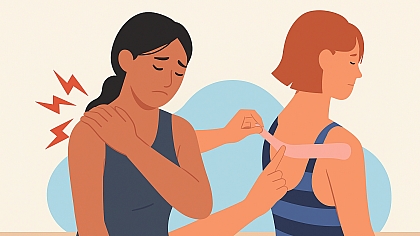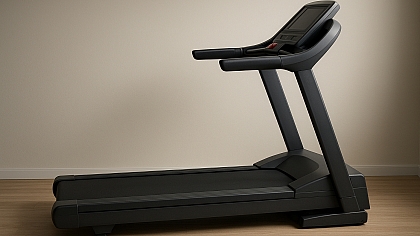
6 Essential Therapies for Effective Stress Management
Feeling overwhelmed by stress and want to find effective ways to manage it? You're not alone, but with numerous therapies and techniques available, it's challenging to discern which ones are truly beneficial for managing stress effectively. Each method varies in its approach and effectiveness, depending on individual circumstances.
Stress management isn't a one-size-fits-all solution, so a personalized strategy is a must. This means that what works for one person may not be suitable for another. That's because unique factors such as personal preferences, specific stressors, and individual responses to stress play an important role in determining the most effective approach.
In this article, we are going to explore several key therapies widely recognized for their effectiveness in managing stress. We'll explore how each therapy operates, its potential benefits, and how it can be tailored to fit different needs. Now, let's get into our comprehensive guide for choosing the most appropriate stress management techniques to improve overall well-being.
Impact of Stress on Physical And Mental Health
Stress has several adverse effects on the body and mind. These effects include some physical symptoms: racing heart rate, which increases blood pressure, tensing of the muscles, and various pains such as headaches. It can weaken the immune system, thus making one prone to diseases.
You may already be aware that stress has a negative impact on mental health. Stress is associated with feelings of sadness, anxiety, and irritability; problems in concentrating and making decisions; and it can even play a role in the development or worsening of such mental disorders as depression or anxiety disorders.
Physical symptoms of stress can influence mental well-being as well. During times of discomfort, we become more prone to being depressed, hence developing a continuous cycle of stress leading to physical symptoms, after which our mental well-being worsens, leading to increased physical symptoms again.
On the other hand, the emotional effects of stress may also affect physical health. For example, sustained stress can trigger low-quality sleep and can alter the hormonal balance within the body, both of which have negative effects on physical health.
What Therapies Are Effective For Managing Stress?
Now, let's delve into some details of a few therapies that help in the better management of stress. Understanding how each of these therapies works will be able to help you establish which may work best in your specific case and preference. Every one of these therapies has different techniques and other approaches one can use in an attempt to lower the levels of stress and eventually achieve general good health. The key is to find out an ideal combination of therapies that work wonders in making you feel relaxed and providing overall well-being.
1. Cognitive Behavioral Therapy (CBT) For Stress Management
Cognitive Behavioral Therapy (CBT) is a widely recognized approach for stress management. It focuses on the connection between our thoughts, feelings, and behaviors, and aims to restructure negative thoughts and modify behaviors in order to reduce stress and build resilience.
In CBT, patients are taught how to identify and challenge stress-inducing thoughts. This involves recognizing and questioning negative thought patterns that contribute to stress, such as catastrophizing or all-or-nothing thinking.
CBT also helps us modify our behaviors in response to stress. This can involve developing healthier coping strategies, such as practicing relaxation techniques or engaging in activities that promote positive emotions.
Thus, one of the key goals of CBT is to build resilience. Resilience refers to the ability to bounce back from stressful situations and adapt to challenges. Through CBT, patients learn how to replace negative thoughts with more realistic and positive ones, which in turn promotes resilience. Cultivating resilience enables us to cope with stress more adeptly and manage life's varying experiences with greater ease.
2. Behavioral Therapy
Behavioral therapy is a psychotherapeutic approach that can effectively address stress by utilizing techniques and strategies from CBT and Mindfulness-Based Cognitive Therapy (MBCT).
As mentioned earlier, CBT focuses on identifying and challenging negative thought patterns that contribute to stress. Through the recognition of automatic thoughts, CBT helps us shift from negative thinking to more constructive and optimistic thoughts. Behavioral therapy, in this context, can involve setting specific goals and using behaviorally-focused strategies to gradually change habits and responses to stressors. These strategies include relaxation techniques, such as deep breathing exercises or progressive muscle relaxation, to promote a sense of calm and reduce stress levels.
MBCT combines CBT techniques with mindfulness practices, which help bring one's attention to the present moment without judgment. Mindfulness allows patients to recognize and accept their thoughts and emotions without becoming overwhelmed by them. When we incorporate techniques from MBCT into behavioral therapy, we can learn to observe our thoughts and emotions in a non-reactive manner. This helps prevent stress from escalating and allows for more adaptive coping responses.
3. Group Therapy
Group therapy is a form of talking therapy that centers around a therapist leading a group of people who come together to discuss their experiences, share their feelings, and offer support to one another.
The main benefit of group therapy is that people understand they are not alone in their difficulties. They gain a sense of belonging and support from others who may be going through similar challenges. This can be comforting and validating, as they can relate to others' stories and experiences. Group therapy also provides a safe and non-judgmental space where patients can openly express their thoughts and emotions, encouraging a sense of shared understanding and empathy.
There are different types of group therapy available, with some focusing on specific mental health issues such as anxiety or depression, while others may support anyone looking to cope with stress or trauma. These can be accessed through various channels, such as mental health services, local charities, and third-sector organizations.
People in need can access these services through their general practitioners or by self-referring to their local mental health services. Local charities may also provide group therapy options that are open to the public.
4. Massage Therapy For Stress Relief
Massage therapy is a proven method for stress relief that offers both immediate and long-term benefits. One major advantage is its ability to quickly alleviate the signs and symptoms of stress. Often, stress is accompanied by tension in the muscles, which causes pain and discomfort. Massage therapy works by targeting these specific areas of tension, reducing muscle tightness, and promoting relaxation. Techniques such as progressive muscle relaxation are particularly effective in managing muscle tension, which aids in addressing physical symptoms of stress, such as headaches and muscle aches.
Moreover, massage therapy promotes relaxation by stimulating the parasympathetic nervous system, which is responsible for calming the body. This activation triggers a relaxation response, which helps reduce the level of stress hormones in the body, including cortisol. With a decrease in stress hormones, we tend to experience an increased sense of calm and overall well-being.
There are several massage techniques are used to drive away stress. Swedish massage involves long, flowing strokes and is designed to relax muscles and improve circulation. Deep tissue massage targets the deeper layers of muscles and tendons, releasing chronic tension and pain. For those who prefer a more gentle approach, aromatherapy massage combines essential oils and a lighter touch for deep relaxation.
5. Exposure Therapy For Anxiety Disorders
Exposure therapy in anxiety disorders is based on gradual, controlled exposure of the patient to situations or objects that provoke fear. Such therapy allows a person to decrease anxiety and phobias in a safe environment by exposing them to the source of their fear. The approach incorporates gradual exposure to feared stimuli with an increasing degree of contact, starting with the less alarming and then progressing to more difficult situations.
Exposure therapy aims at reducing the degree of fear and anxiety by enhancing the ability to fight back in situations that make one anxious. The patient can learn through the therapy ways of managing feelings and reactions to situations, thus enabling gradual habituation of frightening circumstances. Gradually, it results in the lessening of the intensity of the anxiety reaction and increases self-confidence.
Exposure therapy can be done with thoughts and memories, or even real or imaginary situations.
6. Psychodynamic Therapy For Stress Management
Psychodynamic therapy focuses on understanding how past experiences and internal conflicts shape current problems and difficulties. The therapy emphasizes exploring deep psychological structures and dynamics that may be unconscious but significantly impact personal life and interpersonal relationships.
The main idea of psychodynamic therapy is that many problems stem from early childhood experiences. These issues may manifest as unresolved conflicts, traumas, or repressed emotions, which then influence current relationships and behavior. During therapy, the patient explores their early relationships, memories, and emotions to understand how these may be affecting their present problems. This process helps uncover hidden patterns and conflicting aspects that may be sources of stress or emotional discomfort.
Psychodynamic therapy also highlights the importance of transference and countertransference in the therapeutic process. Transference is when the patient projects their feelings and relationships from the past onto the therapist. Countertransference reflects the therapist’s reactions to these projections. These dynamic processes can offer important insights into the patient’s inner world and how they perceive and interact with others. Analyzing transference and countertransference aids in gaining a deeper understanding of the patient’s personal and interpersonal issues and facilitates their resolution.
Psychodynamic therapy assumes that understanding unconscious motives and conflicts can lead to significant changes in a person’s emotional state and behavior. It can be particularly useful for those facing chronic emotional difficulties, interpersonal problems, or a sense of inner discomfort that superficial causes cannot explain. Exploring and understanding the deeper causes of these problems can help the patient find healthier and more adaptive ways to cope.
Thus, psychodynamic therapy provides a unique approach to psychotherapy by focusing on unconscious aspects of the human psyche and their influence on behavior and emotions. It aims to thoroughly understand and work through the patient’s inner world, leading to positive changes in emotional state and interpersonal relationships.
Don't Let Stress Control Your Wellbeing
Addressing stress effectively requires a comprehensive approach that integrates various therapies and lifestyle changes. To manage stress levels efficiently, you should understand and choose the right techniques that fit your individual needs. All of the approaches described in this article address different aspects of stress and anxiety.
Incorporating healthy habits such as maintaining a balanced diet and engaging in regular exercise can significantly contribute to stress management. These lifestyle choices not only support physical well-being but also improve overall mental health. Techniques like deep breathing exercises can provide immediate relief, while long-term strategies help build resilience against chronic stress.
Combining these effective methods for managing stress with therapeutic support and healthy habits allows us to build a powerful strategy for alleviating stress and improving quality of life.
Which of these therapies have you tried, and how have they impacted your well-being? Share your thoughts and experiences to help others find effective ways to manage stress.









